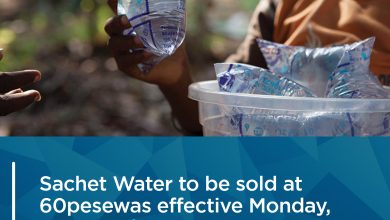Japan to start releasing Fukushima water into ocean from Thursday

Japan has stated that it will begin releasing more than a million metric tonnes of treated radioactive water from the crippled Fukushima nuclear power plant on August 24, despite worries from nearby countries, including China, and local fishing communities.
The decommissioning of the nuclear power station, which was destroyed by the tsunami in March 2011, is seen as being dependent on the plan, which was approved by the Japanese government two years ago.
Tokyo Electric Power Co (Tepco), the plant’s operator, has been storing the water needed to keep the reactors cool at the site ever since the accident, but space is running out.
On Tuesday, Prime Minister Fumio Kishida stated that Tepco had been instructed to “swiftly prepare” for the water release and that he anticipated the “water release to start on August 24, weather conditions permitting”.
Japan claims the water release is safe, and the International Atomic Energy Agency (IAEA) supports this claim. After an inspection in July, the nuclear watchdog for the UN approved the plan, stating that it met international standards and that its impact on people and the environment was “negligible”.
However, some of the neighboring nations, especially China, have voiced doubts about the plan’s safety. Tuesday, the spokesperson for the foreign ministry Wang Wenbin charged that Japan intended to “arbitrarily dump nuclear-contaminated water”.
“The ocean is the common property of all humankind, not a place for Japan to arbitrarily dump nuclear-contaminated water,” Wenbin said, adding that Beijing would take “necessary measures to safeguard the marine environment, food safety and public health”.
While Seoul has determined from its own research that the water release complies with international standards and has stated that it respects the IAEA’s assessment, South Korean activists have also expressed opposition to the plan. Tuesday’s statement did not imply that it was in favor of the plan; it merely stated that there were no technical or scientific issues with it.
Additionally, groundwater and rain that has seeped into the containers are included in the water, which is equal to more than 500 Olympic-sized swimming pools.
According to Tepco, the water has been diluted and filtered to remove radioactive materials, but there are still some traces of tritium, an isotope of hydrogen that is difficult to separate from water. Tepco says the water will be diluted to well below internationally approved levels of tritium before being released into the Pacific.

The water will be released into the ocean at a maximum rate of 500,000 liters (or 110,000 gallons) per day, off the northeast coast of Japan.
According to Greenpeace, a group that advocates for environmental causes, the filtration process is ineffective and will cause an “immense” amount of radioactive material to be dissolved into the sea over the ensuing decades.
The University of Adelaide’s Tony Hooker, a nuclear expert from Australia, dismissed the argument as “fear-mongering”.
“Tritium has been released [by nuclear power plants] for decades with no evidential detrimental environmental or health effects,” Hooker told the AFP news agency.
Source-Aljazeera




